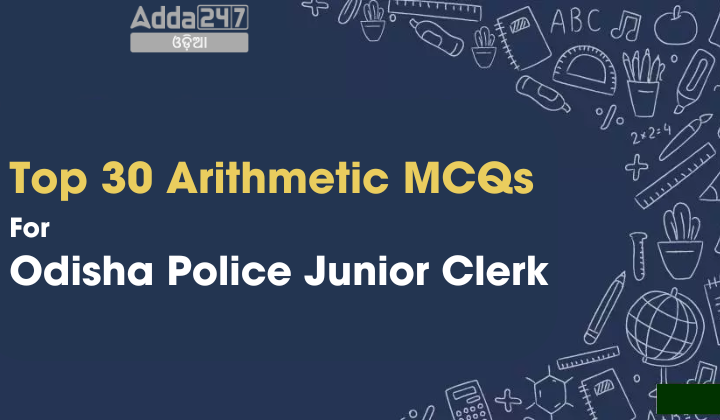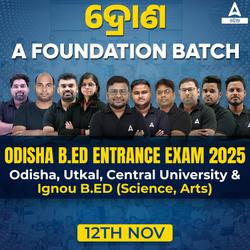Arithmetic forms a crucial part of the Odisha Police Junior Clerk exam, testing candidates’ quantitative skills and problem-solving abilities. Here’s a comprehensive list of the top 30 Multiple Choice Questions (MCQs) that can help aspirants prepare effectively.
Top 30 Arithmetic MCQs For Odisha Police Junior Clerk
1. Avinash invested an amount of₹ 25000 and started a business. Jitendra joined him after one year with an amount of₹ 30000. After two years from starting the business they earned the profit of 46000. What will be Jitendra’s share in the profit?
(1) ₹14000
(2) ₹12000
(3)₹ 766.67
(4) None of these
Answer: (4) None of these 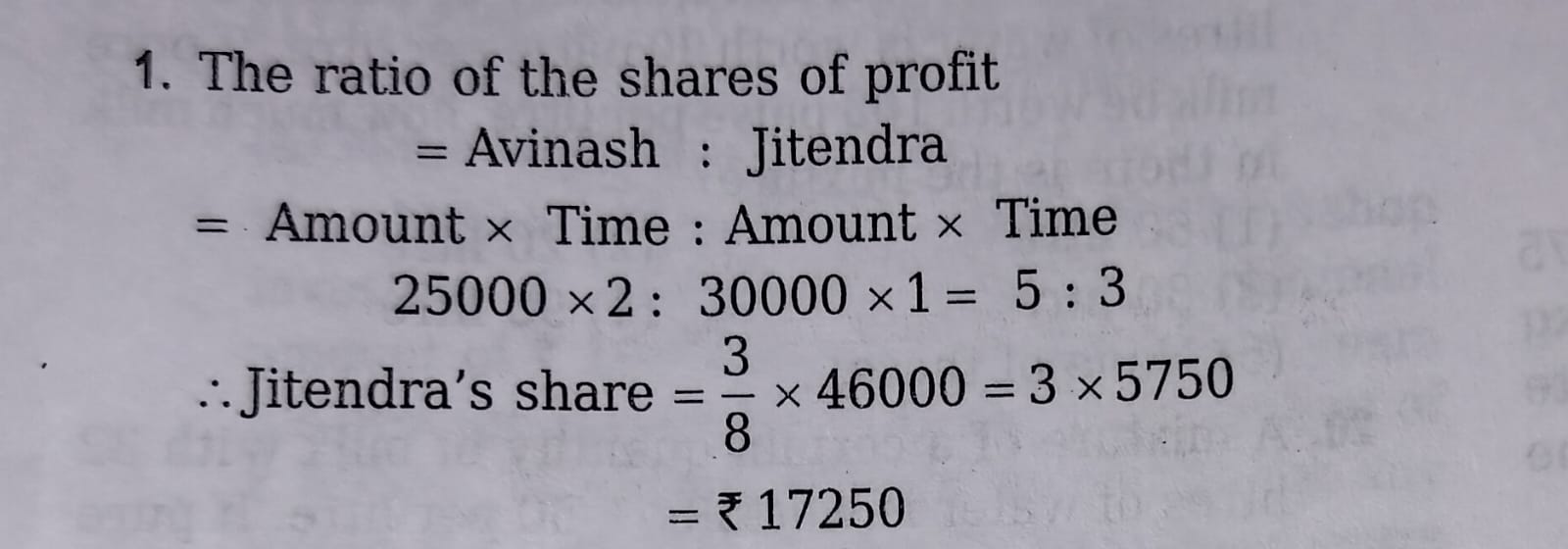
2. Mr. Nilesh Agrawal opened a workshop investing 40000. He invested additional amount of 10000 every year. After two years his brother Suresh joined him with an amount of 85000. Thereafter Suresh did not invest any additional amount. On completion of four years from the opening of workshop they earned an amount of 195000. What will be Nilesh’s share in the earning?
(1) ₹ 85000
(2) ₹110000
(3) ₹135000
(4) ₹95000
Answer: (2) ₹110000

3. A invests 3000 for one year in a business. How much B should invest in order that the profit after 1 year may be divided into ratio of 2:3?
(1) ₹2000
(2)1800
(3) ₹ 3600
(4) ₹4500
Answer: (4) ₹4500

4. A can contains a mixture of two liquids A and B in the ratio 7:5. When 9 litres of mixture are drawn off and can is filled with B, the ratio of A and B becomes 7:9. How many litres of liquid A was contained by the can initially?
(1) 25
(2) 21
(3) 20
(4) None of these
Answer: (2) 21
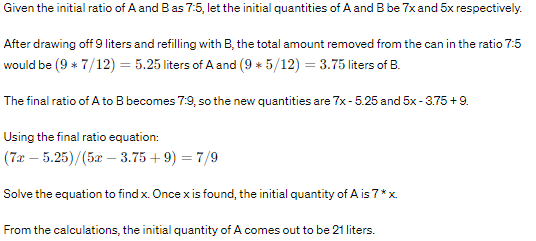
5. Three friends A, B and C started a business by investing amount in the ratio of 5:7:6 respectively. After a period of six months C withdrew half of the amount invested by him. If the amount invested by A is₹ 40000 and the total profit earned at the end of one year is 33000, what is C’s share in profit?
(1)₹9000
(2) ₹12000
(4) ₹10000
(3)₹11000
Answer:(1)₹9000
6. Mr. Shivkumar started a business investing ₹25000 in 1996. In 1997 he invested an additional amount of 10000 and Mr. Rakesh joined him with an amount of 35000. In 1998 Mr. Shivkumar invested another additional amount of ₹10000 and Mr. Suresh joined them with an amount of ₹ 35000. What will be Rakesh’s share in the profit of 150000 earned at the end of three years from the start of the business in 1996?
(1) ₹70000
(4)₹ 75000
(2) ₹60000
(4) None of these
Answer: (4) None of these

7. The annual incomes of two persons are in the ratio 9: 7 and their expenses are in the ratio 4:3. If each of them saves 2000 per year, then their annual incomes are
(1) 18000 and 14000
(2)27000 and 21000
(3) ₹36000 and 28000
(4) ₹45000 and 35000
Answer: (1) 18000 and 14000
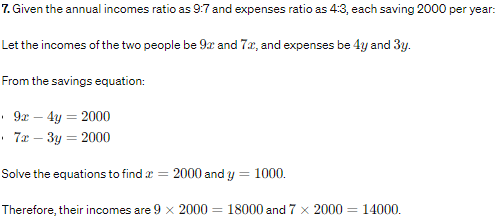
8. A person divided 10,800 among his 3 sons in the ratio 3: 4: 5. Second son kept 1000 for himself, gave 600 to his wife, and divided the remaining money among his 2 daughters in the ratio 11: 9. Then one of his daughters received
(1) ₹1000
(2) ₹1050
(3) ₹ 1100
(4) ₹1150
Answer: (3) ₹ 1100

9. In a school the number of boys and that of the girls are in the respective ratio of 2:3. If the number of boys is increased by 20% and that of girls is increased by 10%, what will be the new ratio of number of boys to that of the girls?
(1) 14:5
(2) 5:8
(3) 7:11
(4) None of these
Answer (4) None of these
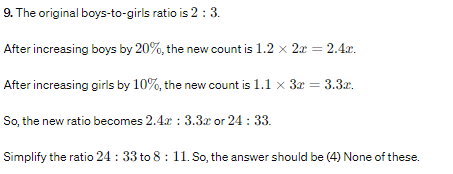
10. Income of two companies A and B are in the ratio of 5: 8. Had the income of company A been more by 25 lakhs, the ratio of their incomes would have been 5: 4 respectively. What is the income of company B?
(1) ₹80 lakhs
(2) 50 lakhs
(3) ₹ 40 lakhs
(4) ₹60 lakhs
Answer:(3) ₹ 40 lakhs
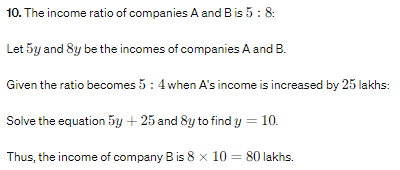
11. A total of 91 boys are seated in three rows. The ratio between the number of boys seated in the first and the second row is 5: 2 respectively and the ratio between the number of boys seated in the second and the third row is 1: 3 respectively. How many boys were there in the second row?
(1)35
(2) 14
(3) 42
(4)56
Answer:(2) 14

12. Find the missing number in the sequence:
2,6,12,20,?,42
(1) 28
(2) 30
(3) 32
(4) 34
Answer: (2) 30
Solution: Look at the differences between the consecutive terms:
Here the difference is additionof 2. like 4, 8, 10, 12
13. Find the missing number in the sequence:
3,8,18,38,78,?
(1) 158
(2) 168
(3) 148
(4) 178
Answer: (4) 178
Solution: The pattern is multiplying the previous number by 2 and adding 2.
Therefore, the missing number is 178.
14. Find the missing number in the sequence:
4,9,19,40,?,121
(1) 82
(2) 81
(3) 80
(4) 79
Answer: (2) 81
Solution: The sequence follows a pattern of multiplying the previous number by a constant and then adding an increasing number. Here the series is n*2+1. Therefore, the missing number is 81.
15.
15. Find the missing number in the sequence:
3,6,12,24,?,96
(1) 48
(2) 45
(3) 54
(4) 50
Answer: (1) 48
Solution: Observe the progression of the numbers:
Each number is doubling (a geometric progression with a common ratio of 2). 2n so So, the missing number in the sequence is 48.
16 . Find the missing number in the sequence:
5,11,19,29,41,?
(1) 54
(2) 56
(3) 55
(4) 62
Answer: (3) 55
Solution: Look at the differences between the consecutive terms: difference is, 6,8,10,12 …… so next add14
17. The average of 5 numbers is 12. If the sum of the first three numbers is 36 and the sum of the last three numbers is 48, what is the fourth number?
(1) 14
(2) 15
(3) 16
(4) 17
Answer: (3) 16
Solution: The total sum of the 5 numbers is
5×12=60.
Given that the sum of the first three numbers is 36 and the sum of the last three numbers is 48, the fourth number is calculated as follows:
48−36=12.
Therefore, the sum of the fourth and fifth numbers is
60−36=24.
Since the sum of the last three numbers is 48, and the sum of the first three numbers is 36, the difference between the sums of the last three numbers and the first three numbers equals the fourth number.
Therefore, the fourth number is 16.
18. The average of 10 numbers is 20. If the sum of the first five numbers is 80, what is the average of the last five numbers?
(1) 10
(2) 16
(3) 20
(4) 24
Answer: (4) 24
Solution: The total sum of the 10 numbers is
10×20=200.
Given the sum of the first five numbers is 80, the sum of the last five numbers is:
200−80=120
The average of the last five numbers is calculated as:
120÷5=24
Therefore, the average of the last five numbers is 24.
19. The average of a set of numbers is 30. If the sum of all the numbers is 360, how many numbers are in the set?
(1) 12
(2) 15
(3) 18
(4) 20
Answer: (1) 12
Solution: Given the average of the numbers is 30 and the sum of all the numbers is 360, we can find the number of values in the set by dividing the sum by the average:
360÷30=12
Therefore, there are 12 numbers in the set.
20. The average of 4 consecutive integers is 18.5. What is the largest integer in the set?
(1) 18
(2) 19
(3) 20
(4) 21
Answer: (3) 20
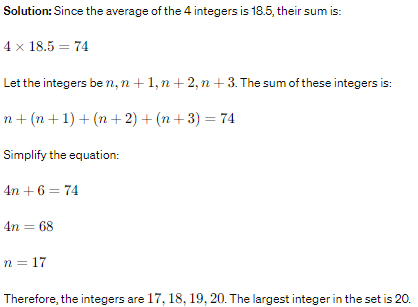
21. A wire is in the form of a circle of radius 42 cm. If it is bent into a square, then the side of the square will be
(1) 60 cm
(2) 62 cm
(3) 64 cm
(4) 66 cm
Answer: (4) 66 cm
22. The area of a circle is 13.86 hec. The cost of fencing it at the rate of 60 paise per metre is
(1) ₹784
(2)788
(3)₹792
(4) ₹796
Answer: (3)₹792
23. The sides of a rectangular field are in the ratio 3:4 and its area 7500 sq m. The cost of fencing it at 25 paise per metre is
(1) ₹77.50
(2) ₹70.50
(3) ₹67.50
(4) None of these
Answer(4) None of these
24. If the perimeter of a square is 16 cm, then the area of the square is
(1) 8 sq cm
(2) 16 sq cm
(3) 32 sq cm
(4) 64 sq cm
Answer:(2) 16 sq cm
25. The perimeter of a square is 12 cm and that of another is 16 cm. The side of a square whose area is equal to the sum of the areas of the above two squares would be
(1) 4 cm
(2) 5 cm
(3) 55 cm
(4) 6 cm
Answer:(2) 5 cm
26. A wire in the form of a circle of radius 98 cm is cut and bent in the form of a square. The side of the square, thus formed is
(1) 146 cm
(2) 152 cm
(3) 154 cm
(4) 156 cm
Answer:(3) 154 cm
27. If the radius of a circle is increased by 6%, then by how much does the area of the circle increase?
(1) 0.36%
(2) 3.6%
(3) 12. 36%
(4) 6%
Answer: (3) 12.36%
28. A car travels 360 km in 4 hours. What is the average speed of the car?
(1) 80 km/h
(2) 85 km/h
(3) 90 km/h
(4) 95 km/h
Answer: (3) 90 km/h
Solution: The average speed can be calculated using the formula:
Average speed= Distance/Time
Average speed=360 km/4 hours =90 km/h
Therefore, the average speed of the car is 90 km/h.
29. A man travels from point A to point B at a speed of 15 km/h and returns back to point A at a speed of 20 km/h. What is his average speed for the entire journey?
(1) 16.8 km/h
(2) 17.1 km/h
(3) 17.5 km/h
(4) 18 km/h
Answer: (2) 17.1 km/h
Solution: Calculate the average speed for the entire journey using the formula:
Average speed=2S1*S2/(S1+S2)
=2*15*20/(15+20)=17.14km/h
Rounded to one decimal place, the average speed is 17.1 km/h.
Therefore, the average speed for the entire journey is 17.1 km/h.
30. Two trains start from stations A and B at the same time and travel towards each other at speeds of 60 km/h and 40 km/h respectively. If the distance between the two stations is 300 km, how long will it take for the two trains to meet?
(1) 3 hours
(2) 3.5 hours
(3) 4 hours
(4) 4.5 hours
Answer: (1) 3 hours
Solution: Calculate the relative speed of the two trains:
Relative speed=60km/h+40km/h=100km/h
Next, calculate the time it takes for the two trains to meet:
Time=Distance/Relative speed
Time=300 km/100 km/h = 3 hours
Therefore, the two trains will meet in 3 hours.

